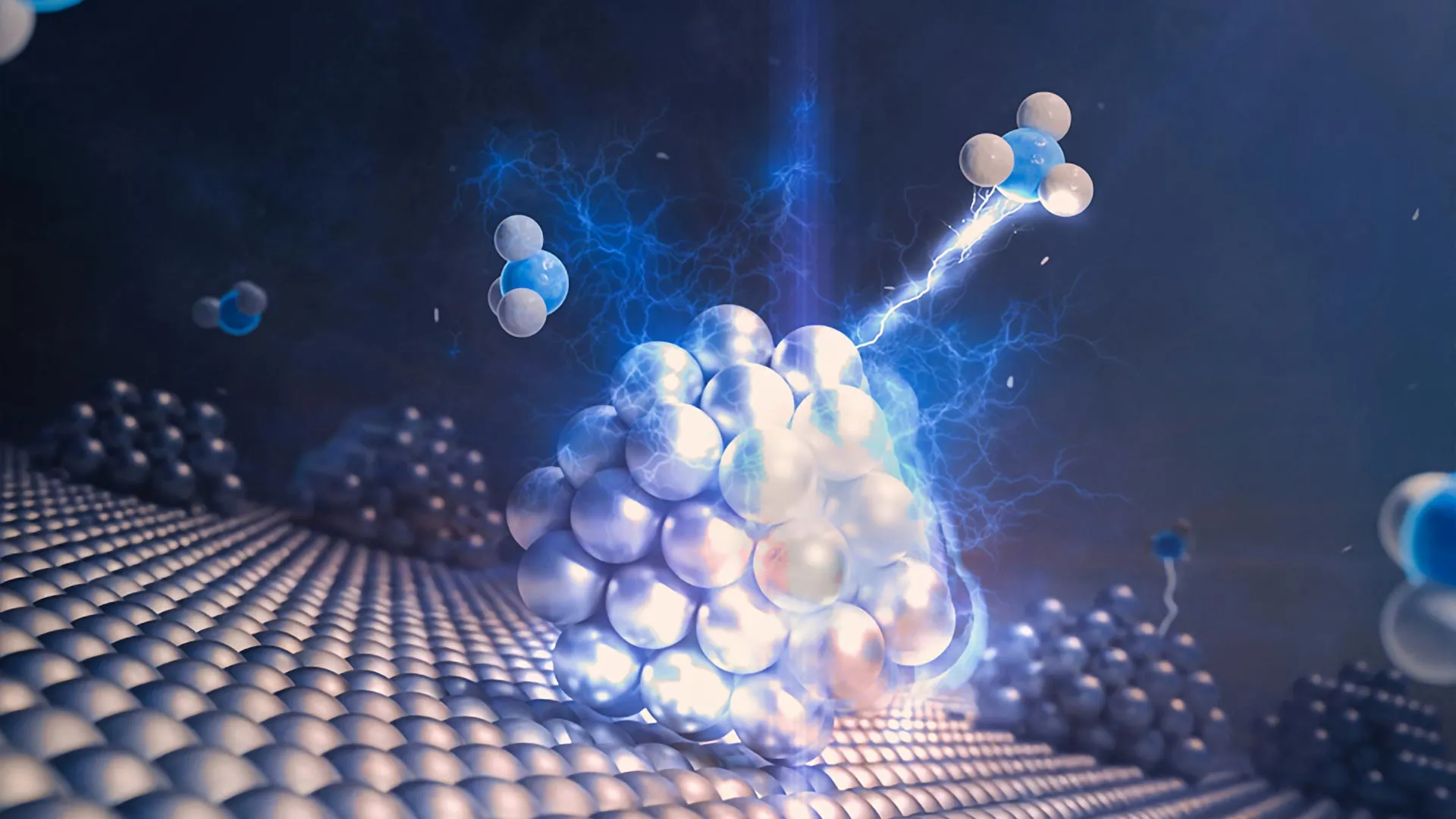Century-old catalysis puzzle cracked by measuring a fraction of an electron
Researchers have unlocked how tiny electron fractions drive catalytic reactions, paving the way for next-generation energy and manufacturing technologies.
- Date:
- November 21, 2025
- Source:
- University of Minnesota
- Summary:
- Scientists have directly measured the minuscule electron sharing that makes precious-metal catalysts so effective. Their new technique, IET, reveals how molecules bind and react on metal surfaces with unprecedented clarity. The insights promise faster discovery of advanced catalysts for energy, chemicals, and manufacturing.
- Share:

A research team from the University of Minnesota Twin Cities College of Science and Engineering and the University of Houston's Cullen College of Engineering has successfully identified and measured the fraction of an electron involved in catalytic manufacturing.
Their findings, published in the open-access journal ACS Central Science, clarify why precious metals such as gold, silver and platinum excel in catalytic processes. The results also point to new possibilities for designing advanced catalytic materials.
Why Catalysts Matter in Modern Industry
Industrial catalysts -- substances that reduce the amount of energy required for a given chemical reaction -- help manufacturers boost reaction speed, yield or efficiency when producing key materials. They play a crucial role in fields ranging from pharmaceuticals and batteries to petrochemical operations such as crude oil refining, enabling production systems to meet global demand.
Improving catalyst speed, reliability and control has become a major objective for the massive fuels, chemicals and materials sectors. As these industries expand, the race to develop more efficient, lower-cost catalytic systems has intensified around the world.
Uncovering How Molecules Share Electrons With Metals
When molecules encounter a catalytic surface, they exchange a portion of their electrons with the metal (in this case, gold, silver or platinum). This interaction temporarily stabilizes the molecules, allowing reactions to proceed. Scientists have suspected this behavior for over 100 years, yet the tiny fractions of an electron involved had never been directly measured.
Researchers at the Center for Programmable Energy Catalysis, based at the University of Minnesota, have now demonstrated that this electron sharing can be measured directly using a technique they created called Isopotential Electron Titration (IET).
A Clearer View of Catalyst Behavior
"Measuring fractions of an electron at these incredibly small scales provides the clearest view yet of the behavior of molecules on catalysts," said Justin Hopkins, University of Minnesota chemical engineering Ph.D. student and lead author of the research study. "Historically, catalyst engineers relied on more indirect measurements at idealized conditions to understand molecules on surfaces. Instead, this new measurement method provides a tangible description of surface bonding at catalytically-relevant conditions."
Knowing exactly how much electron transfer occurs at a catalyst surface is essential for understanding how effectively it will perform. Molecules that more readily share their electrons tend to bind more strongly and react more easily. Precious metals achieve the ideal level of electron sharing needed to drive catalytic reactions, yet the precise scale of this sharing had never been directly captured until now.
IET as a New Tool for Catalyst Discovery
The IET technique can now be used to directly describe and compare new catalyst formulations, helping researchers identify promising materials more quickly.
"IET allowed us to measure the fraction of an electron that is shared with a catalyst surface at levels even less than one percent, such as the case of a hydrogen atom on platinum," said Omar Abdelrahman, corresponding author and an associate professor in University of Houston Cullen College of Engineering's William A. Brookshire Department of Chemical and Biomolecular Engineering. "A hydrogen atom gives up only 0.2% of an electron when binding on platinum catalysts, but it's that small percentage which makes it possible for hydrogen to react in industrial chemical manufacturing."
Connecting Nanotechnology, Machine Learning and Catalysis
The rapid growth of nanotechnology techniques for building catalysts, combined with machine learning tools that can search and analyze vast datasets, has already expanded the catalogue of known catalytic materials. IET provides a third, complementary approach by allowing researchers to examine catalyst behavior directly at the fundamental electronic level.
"The foundation for new catalytic technologies for industry has always been fundamental basic research," says Paul Dauenhauer, Distinguished Professor and director of the Center for Programmable Energy Catalysis at the University of Minnesota. "This new discovery of fractional electron distribution establishes an entirely new scientific foundation for understanding catalysts that we believe will drive new energy technologies over the next several decades."
Part of a Larger National Initiative
This discovery supports the broader mission of the Center for Programmable Energy Catalysis, one of the U.S. Department of Energy's Energy Frontier Research Centers. Since its launch in 2022, the Center has worked to develop next-generation catalytic technologies aimed at producing materials, chemicals and fuels through advanced dynamic catalyst systems.
Story Source:
Materials provided by University of Minnesota. Note: Content may be edited for style and length.
Cite This Page: